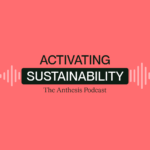Sustainability Trends to Watch in 2025

As we enter another year, sustainability continues to evolve at a rapid pace. Regulatory changes, market expectations, and global treaties will make 2025 a pivotal year. Anthesis experts share some of the sustainability trends to watch in 2025.
Stay up to date with our latest thought leadership on trends for 2025


The ESG reporting landscape is set to undergo significant transformation in 2025, driven by new reporting requirements, global harmonisation of standards, and heightened accountability.
Harmonisation efforts, such as the proposed EU Omnibus simplification package aim to streamline compliance across jurisdictions, while a blend of voluntary and mandatory reporting emerges. Accountability will increase with enhanced assurance demands and the integration of digital solutions for reliable ESG data management. Companies proactive in aligning with these changes can enhance their compliance, bolster stakeholder trust, and align with broader sustainability goals.
“The first challenge for many businesses is knowing which metrics to report on; that understanding comes before scrutinising data and recognising their impact on the environment. …Ultimately, the businesses that see regulation requirements as an opportunity for innovation and act as early as possible to embed a sustainable mindset within the company, will be best positioned to future-proof businesses for long-term success,” Paul Crewe, Chief Sustainability Officer
Find out more about what to expect from the evolving landscape of ESG regulation in 2025

With consumers and regulators demanding greater transparency, green claims are under the microscope like never before. Misleading sustainability claims, or “greenwashing,” can severely damage brand credibility and lead to regulatory penalties.
Positioning credible green claims backed by science and third-party verification is crucial. Our tailored solutions help businesses create transparent, substantiated claims, ensuring they meet regulatory requirements and build consumer trust.

The Voluntary Carbon Market (VCM) is evolving rapidly, driven by the urgency of climate action and recent breakthroughs at COP29 in Baku.

It’s customary to set goals in January, but in 2025, this tradition feels less optimistic. This pivotal halfway point in the UN’s ‘Decade of Action’ has companies assessing their sustainability targets—and realising many are off track for 2030.
Systemic challenges, overambitious goals, and political uncertainty, including the potential impact of a Trump administration, are causing businesses to hesitate or rethink. Some are revising goals to reflect practical realities, while others risk stalling progress entirely.
In this article, we explore why targets are being missed, the rise of “greenhushing,” and tips on how to reset goals strategically and transparently.

As the sustainability landscape continues to evolve, 2025 is set to be a pivotal year for integrating climate action, nature conservation, and social impact into cohesive strategies. This intersection is no longer seen as a series of isolated efforts but as a powerful, interconnected framework that delivers measurable environmental and social benefits. For forward-thinking companies, this integrated approach represents a strategic advantage, offering opportunities to drive meaningful change while positioning themselves as leaders in the sustainability space.
The sustainability landscape in 2025 will be shaped by regulatory evolution, consumer demands for authenticity, and global commitments to tackling climate challenges. By preparing for these trends now, businesses can position themselves as leaders in the transition to a sustainable future.
How are you preparing for these sustainability trends in 2025? Get in touch to discuss your sustainability plans for the year.